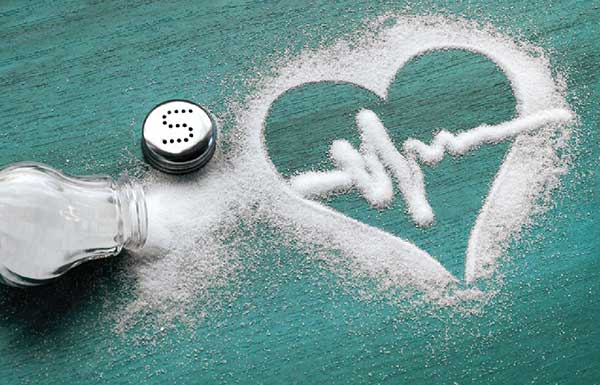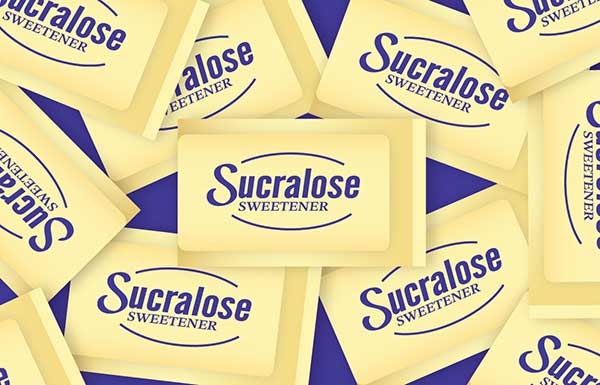
BY DR. BAYNE FRENCH
Click here to read Part 1Welcome back to Part Two of our three-part adventure defining, dispelling myths, and traversing the murky truth all around dietary fat. With me as your certified guide (make that double board certified), we’ll continue hacking away at the falsehoods and fantastical lore surrounding that one word we’ve been deceptively taught to avoid.
We’re deep in the bush now. It’s austere here. Thick brush, mosquito hoards, and circling wolves. Let’s carry on intrepid fat travelers!
POLYUNSATURATED FATS:
Gian Luigi Russo wrote an article published in Biochemical Pharmacology 2009, detailing O6 and O3 from their biochemical functions to clinical implications for the prevention of cardiovascular disease. That’s what we really care about right? Not just what these compounds do in a lab, or microscopically but how do those functions affect our health?? The first part is relatively easy. There is decade’s worth of pre-clinical and animal study data about benefit and risk that is very consistent overall. Human data is another story completely with very polarized results. Deep, deep into the timber we go. Stay close! Head on a swivel!
Here is the foundation on which everything else in this article will build…Russo wrote: “…a complex series of desaturations and elongation reactions acting in concert transform LA and ALA to their higher unsaturated derivatives: arachidonic acid (AA) from LA, eicosapentaenoic (EPA) and docosahexanenoic acids (DHA) from ALA. AA and EPA are precursors of different classes of pro-inflammatory or anti-inflammatory eicosanoids, respectively”. Allow your steadfast, spandex-clad, fellow hiker to translate: O6 fats (LA) lead to compounds that directly interface with our genes, stimulating compounds that cause inflammation. O3 fats (ALA) lead to compounds that also interact with our DNA, stimulating the production of compounds that reduce inflammation.
Table 1 details relative O6 (LA) and O3 (ALA) amounts in various foods and oils. Quantities vary significantly among species, and within the same species. Environment, animal diets, and especially whether or not the animal ate its native diet made large differences in the fat complement. There are a few notable observations from the below table:
1. Vegetable oils are loaded with O6 fatty acids.
2. Canola and Linseed oils have the most O3 fatty acids.
3. There is relatively much more O6 in foods than O3.
4. Fish (and algae) are the main sources of the most biologically favorable types of O3, EPA and DHA.

OMEGA-6/OMEGA-3 RATIO:
How we all doing? Tired? I am. Tired of Western Medicine being terrific at treating disease and terrible at promoting health. Which is exactly why we’re on this journey. Watch your six!
Dr. Simopoulos first reported on the importance of the O6/O3 ratio in 1991. Anthropological data from our Paleolithic era was included in that work. It was felt that for much of human history, the ratio was close to 1:1. Meaning equal milligram amounts of O6 and O3 fat consumption. Our current Western diet ranges from 15:1-20:1 (Simopoulos. Biomed Pharmacother 2002; Biomed Pharmacother 2006). This change has occurred relatively quickly, perhaps in the last 150 years, corresponding with the dramatic increase in O6 rich vegetable oils. The most commonly agreed upon mechanism by which this leads to metabolic mayhem is that the O6 fats drive the production of inflammatory compounds which “contribute to the formation of thrombus (blood clots) and atheromas (arterial narrowing and hardening), allergic and inflammatory disorders and abnormal cell proliferation (cancer).”
Other studies of our evolutionary nutrition profile also indicates an omega 6 to omega 3 ratio of 1:1 up to 4:1. Given the ubiquity and low cost of O6 fats, their delicious nature with deep fried foods, and they being widely touted as “heart healthy”, we are certainly not suffering from an O6 deficiency. O3’s however are harder to come by, found in wild caught fish and other seafood, algae, and eggs and meat from animals that ate their native food (picture a happy, grass fed cow). Thus the O6 to O3 ratio is high and research supports this as a driver of disease (Simopaulos. Biomed Pharmacother. 2002; Simopaulos. Biomed Pharmacother. 2006). In one study, Dr. Simopoulos looked specifically at eggs, and published her data in the American Journal of Clinical Nutrition in 1992. Eggs from corn-fed chickens were compared to eggs from free-roaming, omnivoric chickens. Recall that chickens, like all ground-dwelling wild birds are omnivores. My Rhode Island Reds will kill and eat mice. Eggs from chickens that ate their native diet had twenty times more O3 than eggs from corn-fed chickens.
THE OMEGA-3 INDEX:
Researchers von Schnacky and Harris developed the Omega-3 Index. It is a direct measure of the percent of EPA + DHA in the membrane of red blood cells, and acts as a surrogate marker of a person’s whole body O3 status. The clinical and preventative efficacy of this lab test is detailed in von Schacky et al. Cardiovasc Res 2007.
Several studies have suggested that measurement via this test better suggests an individual’s O3 status than does standard assays (Harris et al. Prev Med. 2004; Harris et al. Am Jour Clin Nut. 2008). A lower index was associated with a higher risk of dying in patients with known cardiovascular disease.
Dr. Weylandt (Biomed Res Int. 2015) felt that O3 supplementation could help “reduce the tissue O6/O3 ratio to a level that probably existed during millions of years of human evolution. This ratio dramatically increased in recent millennia due to deep changes in dietary habits following the transition from the hunter-gatherer lifestyle to agricultural societies”.
The following is an excerpt from an article I previously wrote on lab tests (Endurance News Weekly 1/19/22): “A test exists called the Omega-3 Index where we can quantify our own fat profiles in the membranes of our red blood cells. I have never ordered this test, so have no experience with insurance coverage. Nor do I have any desire to interface with insurance companies unless forced. I have only helped patients interpret the results from home testing kits. For $50-100 and a drop of your blood you can obtain yet another healthful and preventative modality. Health Savings Accounts (HAS) or Flexible Spending Accounts (FSA) can be used to fund this test. An unfavorable result with a higher risk of CVD is <4%. Intermediate risk is 4-8%. A low risk, optimal result is >8%.”
OMEGA-3 EVIDENCE IN HUMANS:
Things just got super dicey on our wilderness sojourn. Weylandt et al published Omega-3 Polyunsaturated Fatty Acids: The Way Forward in Times of Mixed Evidence in Biomed Research International, 2015. This huge review paper needs special mention because it honestly addresses the controversies and divergent results that many human studies have illustrated.
As mentioned before, many preclinical and animal studies have demonstrated notable beneficial health effects of O3 fats. Several human clinical studies did as well, leading many medical institutions and societies worldwide to recommend increasing O3 intake. In recent years, other studies have shown contradictory results that have blown up on major media and have prompted several patients to inform me that fish oil “isn’t any good anymore”.
The large article addresses the evidence of O3 fats in cardiovascular disease, inflammatory disease, and cancer. Specifically, in regards to cancer, a couple statements really got my attention and I quote them: “It is therefore conceivable that increasing omega-3 intake could be established as an easy and low-risk, high-gain intervention for the prevention of tumorigenesis” (formation of tumors). And in regards to O3 fatty acids multiple cellular regulatory mechanisms, “Actually, it is quite astonishing how many signaling pathways and molecular targets have been so far implicated in the antineoplastic effects of these dietary compounds”. Antineoplastic means anticancer. The Dr. Brasky study (Brasky et al. Journ Nat Cancer Inst. 2013) that made national headlines suggesting that O3 actually promoted prostate cancer was also addressed in detail, as were its shortcomings. Weylandt states, “while current human data are certainly not sufficient to recommend omega-3 to prevent prostate cancer, they are also far from being sufficient to support a prostate cancer promoting effect.”
So, why the controversy? How can one study done by smart people show one thing, and another study looking at the same thing, and also done by smart people, show something completely different? Welcome to the world of nutritional science. Below are some possible reasons:
1) “Association” does not mean “causality”. As an example, a study could be made associating the death rate of my mice-eating Rhode Island Red chickens with the density of foxes in the woods around my house. More foxes, higher chicken death. But are the foxes causing that fowl mortality? Say, oh I don’t know, my kids forgot to feed and water them for several days? Hypothetically.
2) Food Frequency Questionnaires and Diet Records to establish fish (as a source of O3) intake frequency have questionable reliability. Furthermore, there is poor correlation between fish consumption and actual levels of O3 measured in the body.
3) There is large human variability in absorption of O3 from the gut and into the blood stream. Absorption of fats is very different when eating a high-carb diet vs. a high-fat diet.
4) There is large human variability in conversion of ALA to the bioactive EPA and DHA forms.
5) There is large variability in the O3 content of fish, serving sizes, and whether the fish is farmed, wild caught, cooked with high heat, or smoked.
6) Direct measurement of blood levels of O3 removes the problems with questionnaires. But blood O3 levels are greatly affected by feeding/fasting cycles, and by the fat content of the last meal. Blood measurements may not at all reflect true body O3 levels. The Omega-3 Index is not universally used among researchers.
7) Some studies gave patients a defined dose of O3. Makes sense right? But there is such a big range in doses and variability of baseline patient diets that making interpretations of results becomes difficult.
8) Rarely in studies has the amount of O6 consumption been ascertained. High O6 (and a high O6/O3 ratio) “may deeply alter the effects of omega-3 supplementation.” Recall that O6 fats interfere with O3 conversion to biologically active forms.
9) The source and quality of O3 supplements ingested by study subjects is also critically important. Are there organochlorine pesticides and mercury contaminants? Were the supplements subject to oxidative damage from prolonged storage, or exposure to oxygen and light?
10) Blah, blah, blah.
If you’re waiting for universal agreement among quacks like me about how we’re supposed to go about being healthy - you will die disappointed. There is just too much bias, special interest, non-transparent funding sources and attention-grabbing headlines from “reputable” sources. As best you can, you must educate yourselves, and proceed with nutrition and supplements in a manner that makes sense to you.
Time to break camp for this segment of our trip, but load up and I’ll meet you back at the trail head next time for Part Three, where we’ll continue to bush-whack our way back to educated fat reality, with a renewed outlook on nutritional simplicity and sanity. Cheers!
Click here to read Part 3







